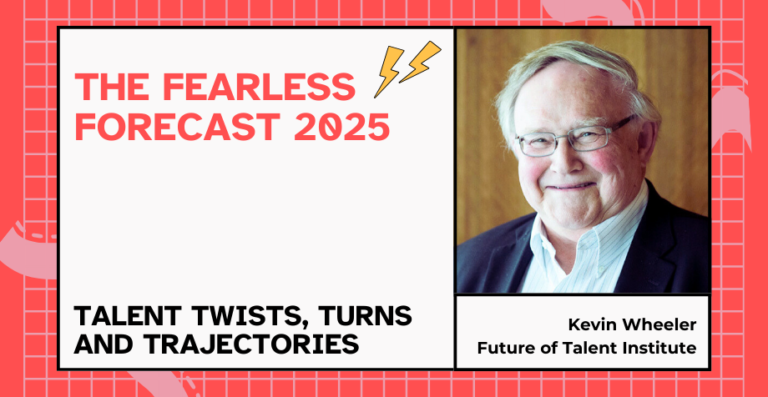When was the last time you “flew off the handle?” The last time you had an overwhelmingly strong reaction and responded in a way you regretted?
Everyone has experienced this—being overcome with emotions such as frustration, sadness, fear, stress, hurt, or rage— feeling something so strongly that you lose the ability to respond with calm and forethought.
Learning to manage our responses to strong emotions is a natural part of being human.
In Daniel Goleman’s framework of Emotional Intelligence, the goal is to ‘Self-Regulate’ and to exhibit ‘Emotional Self-Control’. One of four self-management competencies, it refers to our ability to stay calm, clear, and collected in the face of distressing emotions and disruptive impulses.
In plain words: It means we keep our $%!t together no matter how intense our feelings.
When we are in Emotional Self-Control, we can:
- Stay focused and agile in stressful situations
- Engage in meaningful and productive conflict
- Engender more positive interactions than negative ones
- Create the conditions for others to contribute their best effort and ideas
Not only does this competency impact our mental and physical well-being, but it’s vital for maintaining trusting and productive relationships.
Why Emotional Self Control Matters
Sigal Barsade, an award-winning researcher from The Wharton School, examines how emotions impact organizational culture. In a study involving simulated teams, she found that the mood of the team was directly impacted by the mood of the leader. The more upbeat the leader, the more productive the team. The more down the leader, the worse the team performed.
This is known as “emotional contagion”—when people in power dictate the mood of everyone around them.
In a work context, this affects things such as employee satisfaction, burnout, and teamwork thus impacting financial performance, turnover, and absenteeism.
This phenomenon also happens in the home. For anyone who has grown up with volatile caregivers, you may have had the experience that you were always on guard, waiting to see if they could keep you safe. Your caregiver’s ability to manage their emotions dictates the quality of your internal world.
Research also shows that when it comes to work, memories of toxic interactions with a leader stick stronger than memories of what has gone well.
When a leader loses Emotional Self-Control, those events stand out and one toxic interaction overshadows a disproportionate amount of good.
Emotionally intelligent leaders go to great lengths not to be bowled over by their emotions, let alone spread the negative ones.
The Brain Science of Emotional Self-Control
Emotional Self-Control lies in the relationship between two parts of the brain: the prefrontal cortex and the amygdala.
Located in the very front of our brain, just beneath our forehead, the prefrontal cortex is the home of forethought. It guides how we plan, express our personalities, and moderate our social behavior.
Deep in the very center of our brain is the amygdala. This small almond-shaped mass is responsible for detecting and responding to danger. It is the home of our fight, flight, or freeze response: when an elk detects a panther in the wild, the amygdala tells it to attack, run, or play dead.
When we come up against a trigger—a missed deadline, a tantruming child, news or feedback we don’t want to hear—our amygdala can mistake stress for imminent danger and disrupt the prefrontal cortex.
We call this an amygdala hijack: when the amygdala response is so strong, it overpowers our capacity to guide our behavior.
Have you ever found yourself having an intense emotional response to something that was objectively benign?
These hijacks can be particularly strong when something in our environment triggers the memory of an experience from our past. Our bodies are intelligent and as a result, our nervous system will remember things our minds are eager to forget.
For example, if you grew up in a house where people violently yelled all the time, you might have a harder time hearing someone raise their voice in a heated conversation. As a child, you may have felt unsafe in the presence of rage, so as an adult, even the slightest tone of anger can activate your nervous system and trigger that amygdala hijack.
When we are working on regulating our emotional reactions and building Emotional Self-Control, it’s important to remember: our reactions are not always rooted in the present.
We are constantly responding to current events based on our experiences from the past.
Also, because individuals respond to stressors differently, not all amygdala hijacks look the same. As a coach, I find that many of my clients don’t respond with an outburst — instead, they dissociate, avoid and/or go into a place of total silence.
In the right context, any of these responses may be helpful — they keep us safe. But when we use them out of context, every time a strong emotion arises, we are faced with a new challenge.
If I were to disappear every time you ignited a strong emotion in me, how would you respond? Would you be able to trust me? Would you be able to depend on me when things got hard?
John Gottman, the American psychologist and researcher known for his work on divorce prediction and marital stability, says it this way: “Trust is built in very small moments, which I call ‘sliding door’ moments. In any interaction, there is a possibility of connecting with your partner or turning away from your partner. One such moment is not important, but if you’re always choosing to turn away, then trust erodes in a relationship — very gradually, very slowly.”
Developing Emotional Self-Control
Demonstrating Emotional Self-Control does not mean we suppress or avoid our emotions. (That’s moving into the dangerous territory of denial.) On the contrary, this competency begins by cultivating greater Emotional Self-Awareness.
We have to be aware enough to see our amygdala hijacks coming, resilient enough to sit with our strong and uncomfortable emotions, and strategic enough to regulate the thoughts, feelings and sensations that go with them.
After all, how do we manage something we can’t recognize? How do we mitigate a reaction we don’t see coming?
I often think of Emotional Self-Control like this: in the presence of a trigger, our job is to transform our inner landscape from a bustling city into a wide-open stretch of road. By tracking the relationship between events, thoughts, emotions, and the body, we gain clarity. With this clarity, we are better able to see what’s coming — we can more consciously choose our path forward without being overrun by the semi-truck of our emotions.
I help my clients understand their triggers and the sensations they invoke so they can begin developing strategies to intercept a hijack.
Here’s an example: One of my clients realized that every time her boss asked her to work late to meet a deadline she would fly into a state of rage. “How little does she think of me?” she would ask herself. “Doesn’t she know I have kids to get home to?”
I asked this client to:
- Describe the Trigger: Was it a person? An event? A conversation? An object that got in your way? What was happening and who was involved?
- Describe the Emotions: Not just “what were you thinking?” but “what were you feeling?” How intense was the feeling? Was it familiar?
- Describe the Physical Sensations: Did your fists clench? Did your stomach tighten? Did your temperature change? Did your throat close up?
- Describe the Timing: How long did the feelings and physical sensations last? How long did it take you to go from 0 to 100 and back to neutral again?
- Recall the Thoughts: What stories were you telling yourself? Can you remember thinking at all?
Once my client understood the thoughts, feelings, and sensations that surrounded the trigger, she was able to intervene on her behalf. The moment the thoughts started going, her palms started sweating, and her stomach started hurting, she would pause, excuse herself, and find a quiet place to breathe. From a calm place, she found she was able to come up with alternative solutions for meeting the deadline —ones that didn’t involve a sacrifice of her time.
Let’s be real: no one wants to act from a place of fear, anger, or tension, particularly when their wellbeing, their relationships, and their livelihood are on the line.
The purpose of Emotional Self-Control is to respond from a place of intention in a way that matches the context — it is to free us from being taken over and to put the reins back in our hands.
Can you think of a time you experienced an amygdala hijack? We can learn from one another. Share in the comments what your trigger was, your emotions, physical sensations, timing, and thoughts. How might you adjust to prevent your knee-jerk reaction next time you notice this pattern?
If you experience ongoing challenges in the area of emotional self-control, I can help. Reach out to discover how I can support you!
Cover image: Shutterstock
This article first appeared on LinkedIn on 24 November 2020.






